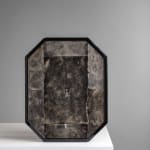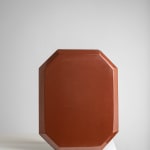


Katsu Hamanaka Japanese-French , 1895-1982
Tray, 1930
Octagonal tray executed in black vegetal lacquer, sheets of shagreen treated with the "samenuri" technique
Further images
Provenance
Publications
1
of
2


